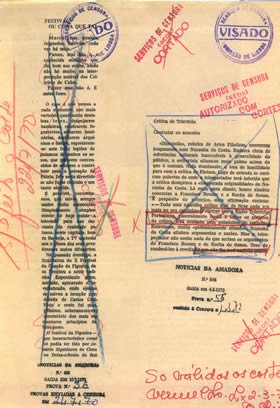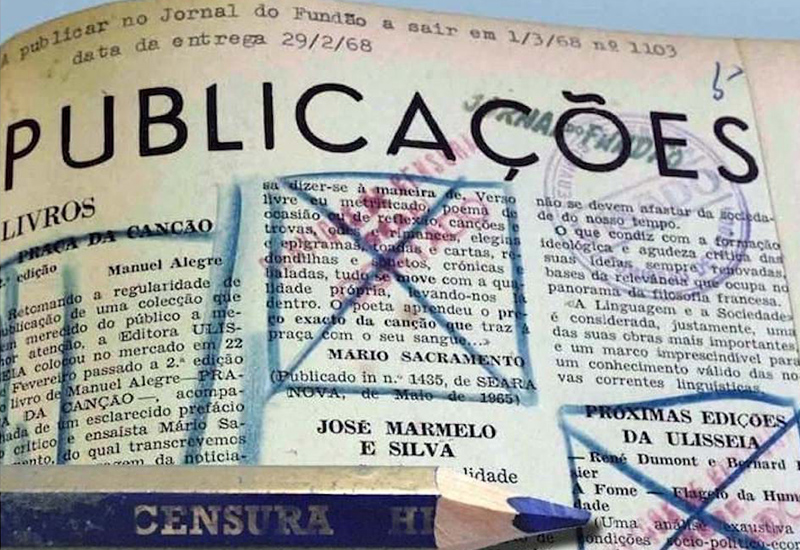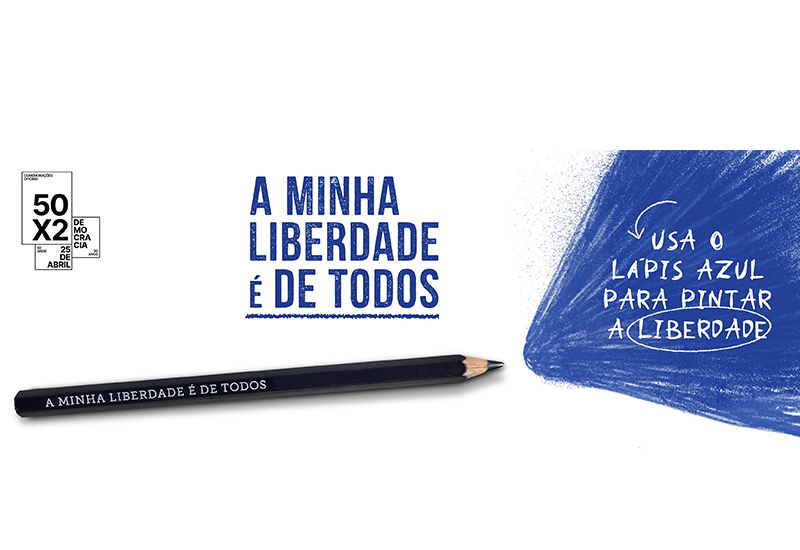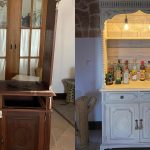Censorship was part of Portuguese national culture until the Carnation Revolution in 1974. During Portugal’s 48 years of dictatorship, the blue pencil was one of the most symbolic instruments of censorship and oppression.
On 11 April, 1933, a new constitution and a decree, published on the same day, established censorship for “periodicals, handbills, leaflets, posters and other publications, whenever in any of them political or social matters are covered”. By 14 May, 1936, the creation of newspapers was regulated and the Regulamento dos Serviços de Censura (Censorship Services Regulations) was adopted in November of the same year. Using the lápis azul (blue pencil, which came to be a symbol of censorship), city and district censors would strike out any text deemed unsuitable for publication. Now, in 2024, on the 50th anniversary of the Carnation Revolution, a movement has started to give the blue pencil a new meaning: freedom.


“My Freedom is Everyone’s” is being promoted by the Commission for the Commemoration of the 50th anniversary of 25 April, in partnership with the Gerador platform. “This project aims to contribute to greater knowledge about the dictatorship in Portugal, namely about censorship and its impacts, drawing attention to one of the most important achievements of April: freedom,” Maria Inácia Rezola, executive commissioner of the commemorations, announced in a statement sent to 7MARGENS. “The work of preserving memory and building the next 50 years of democracy needs everyone.”
The idea is to fill a small square the size of a traditional Portuguese tile with a drawing, forming a collective digital mural – Mural da Liberdade – to be publicised in April on the project’s digital page. In essence, the blue pencil, a symbol of censorship and oppression, will be transformed into a symbol of freedom.
In March, this collaborative initiative will be implemented in more than 200 schools across the country from the second cycle to secondary education. Everyone can get involved via the project’s digital page, where the drawing can be created using a computer, tablet or mobile phone. It is also possible to join the campaign via social media, following the instructions described on the website and using the password #aminhaliberdadeedetodos.
gerador.eu/aminhaliberdadeedetodos-50anos25abril













